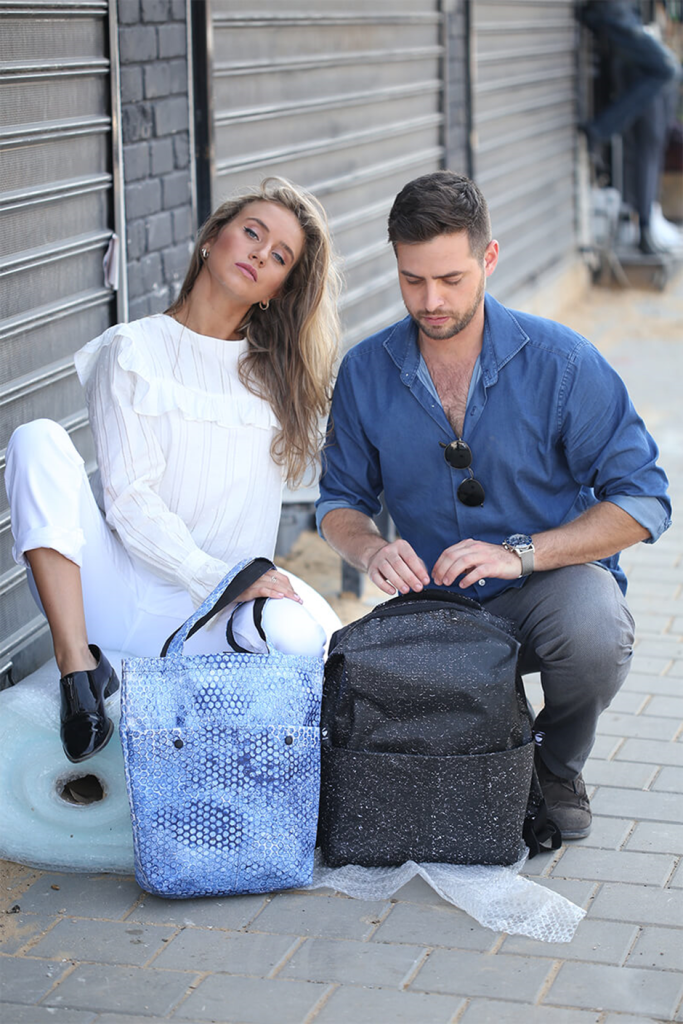Blog
10 QUESTIONS TO ASK YOURSELF BEFORE CHOOSING THE PERFECT ENVIRONMENTALLY FRIENDLY TEXTILE FOR YOUR NEXT COLLECTION

By Lora O’Brien
Fashion is one of the biggest industries worldwide. Aside from the useful clothes people need, we can’t ignore the copious amounts of fast fashion clothing we don’t need that already exists in the landfill. But there is a solution, and it starts with you, the designer.
Fashion designers hold the power to flip the way we shop around completely. After all, it is designers that offer consumers the ability to shop better. Designers can make the world of fashion more sustainable. And one thing is vital: what the collection is made from.
Slow, sustainable fashion allows designers to contribute their part for the good of the environment and enhance sustainability awareness with their designs. But before choosing a sustainable environmentally friendly textile for your next collection, you’ll want to ask yourself these questions below to really ensure that your next collection helps you to be a sustainable fashion designer.
10 QUESTIONS TO ASK YOURSELF AS A SUSTAINABLE DESIGNER
Where does the textile come from?
A textile may seem sustainable on the surface, but where it’s sourced from matters, too. Where does it come from? Who made it? Does it have an interesting story behind it? Does it support your personal values? Does it inspire you to create new items?
Will it contribute to raising awareness of sustainability?
One of the most important factors of being a sustainable designer and the importance of eco-friendly textiles is asking yourself whether your collection is raising awareness of sustainability or not. You’ll want to ensure that your brand promotes the ethics you wish to see. Does your collection provide a solution to fast fashion? Are the textiles you’re using eco-friendly?

Has this been tried before?
In a world where many are dedicated to providing sustainable solutions, there are plenty of existing textiles that are paving the way for a more sustainable fashion industry. When looking for environmentally friendly textiles, try to think outside the box. Ask yourself whether it has been tried before, or if you need to be more innovative. If you have found a sustainable material that interests you and you’re wanting to use it, research to see whether other designers have experience with this material, which products they created using it, and how it looks.
Does it stand apart from other materials on the market?
When it comes to choosing your next sustainable textile, you’ll want to ask yourself: has this been done before? Standing apart from the crowd is crucial in making your brand and collection stand out. Try to find textiles that are not only sustainable but are innovative, too.
Does it have certifications or laboratory testing?
Above all else, you want to choose a textile that is safe to use and has ethical credentials to back it up. What certifications does it have? Has it been laboratory tested?
Is it unique? Better yet, is it patented?
Is the textile you’re about to use unique? Sourcing a textile that is relatively new and not as readily used will ensure your brand stands out. If you find a textile that is patented, it’s even better because this means that you won’t be able to find this process anywhere else, giving exclusivity to your collection.

Is it eye-catching?
When it comes to shopping, people shop with their eyes, so it’s crucial your collection stands out. There are plenty of options in the context of fashion, so really making sure people notice your items is crucial. Is it colourful? Does it have an interesting pattern? Would you see it in a shop and buy it?
Does it have an interesting story?
Having a story behind the textile you’re using is, in my opinion, important in terms of sustainability. Why are you using this textile? What about it made you think wow? If there’s a story, it can elevate your brand as you can use this as a selling point to your own customers.
Does its production process save energy?
If a textile is sustainable but requires a lot of energy to manufacture it, it’s counterproductive and not as sustainable as it seems. When shopping for textiles, try to use textiles that already exist. These require no virgin materials to be made and you are not creating something worse or partaking in greenwashing. Choose textiles that are fully natural and biodegradable or textiles that have been produced from recyclable waste.

Can you design a different range of collections out of it?
Sure, choosing unique textiles that are ethical is a great step in terms of sustainability, but is it versatile, too, or does it only have one function? Preferably, the textile you choose will be suitable for many different options within your collection, and if it works and your clients like it, you could develop further new materials of colours that will be different every time. Can it make sneakers, accessories, and clothing?
If you want to learn more about Remeant’s sustainable textiles and see the diverse range of colours and textures available, click here. Alternatively, if you’d like to consult with us further, contact us here or send us an email to – info.remeant@gmail.com.
